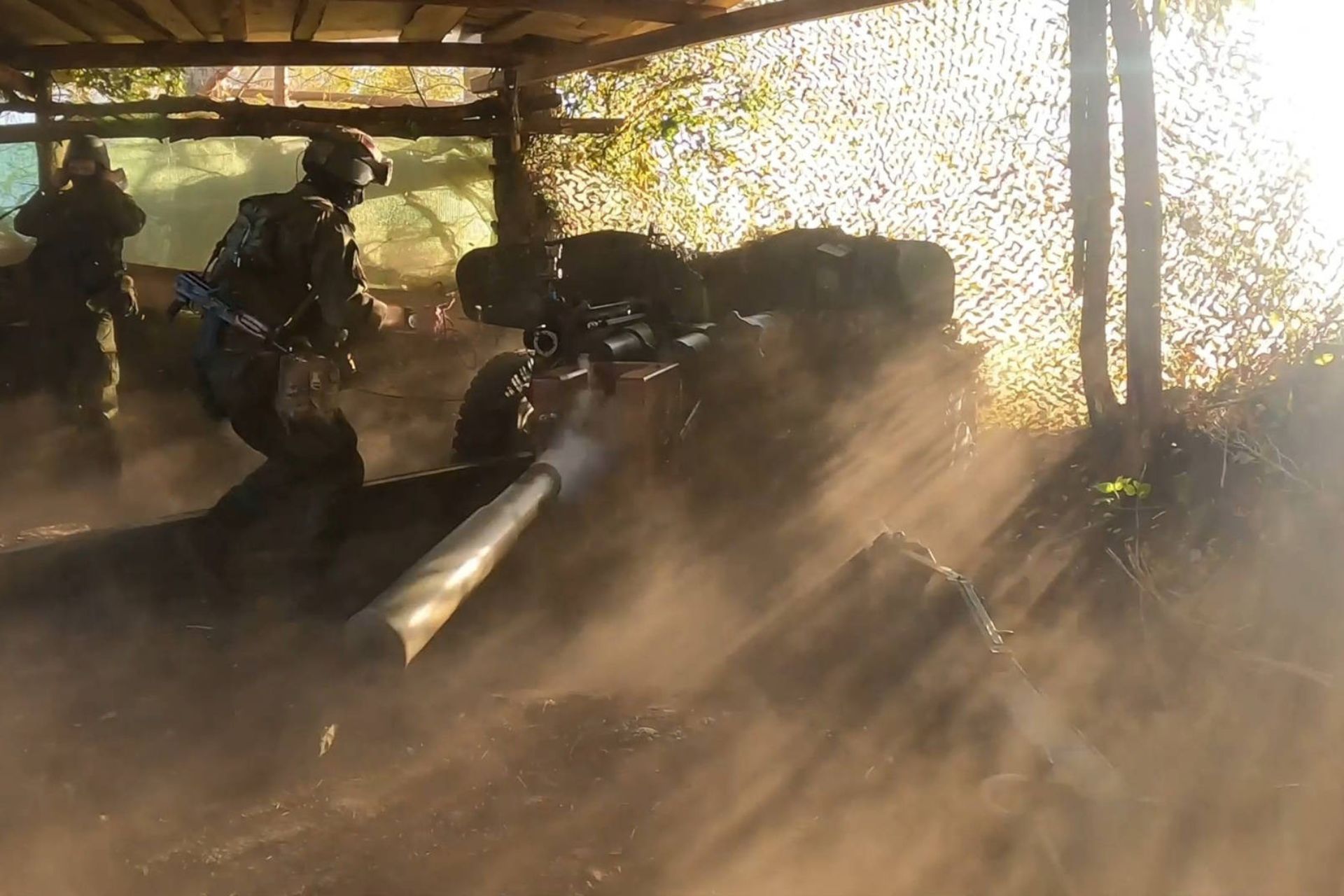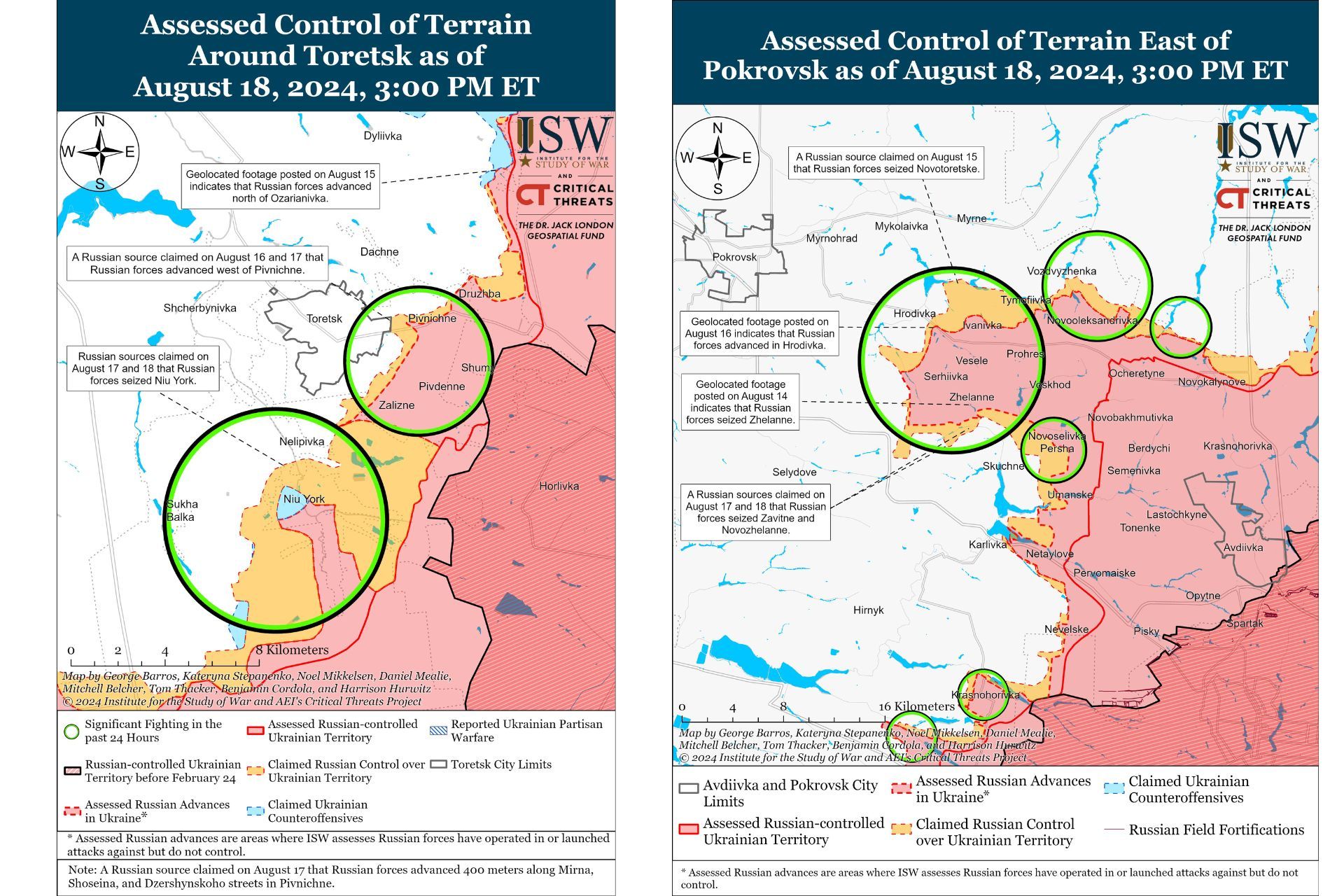Breaking News
Analysis: Ukrainian Breakthrough in Kursk — Can It Halt Russian Progress in Donbas?.
Since August 6, 2024, Ukraine has launched a bold offensive in the Kursk region, on Russian territory, marking a new phase in the war between Kyiv and Moscow that has been ongoing since 2022. Initially perceived as a localized destabilization attempt, this incursion quickly gained momentum, forcing Russia to redeploy part of its forces from Donbas to secure its own territory. This article explores the implications of this offensive, the Russian responses, and the prospects for the continuation of the conflict.
Follow Army Recognition on Google News at this link

For Ukraine, striking Russian territory, even symbolically, represents a moral victory and a demonstration of resilience against a numerically and technologically superior enemy (Picture source: Ukrainian MoD)
The Ukrainian Offensive: A Bold and Calculated Maneuver
The Ukrainian offensive in the Kursk region represents a daring maneuver within a strategically delicate context for Kyiv. After more than two years of conflict, Ukrainian forces faced critical situations on multiple fronts, particularly in Donbas, where the Russian army continued to advance slowly but steadily. General Oleksandr Syrsky, recently appointed as the Commander-in-Chief of Ukraine's armed forces, designed this offensive not only to address the military pressure from Russia but also to reinvigorate a Ukrainian army that had been worn down by months of intense combat.
This offensive in the Kursk region was meticulously planned, with several short- and long-term objectives. The primary goal was to surprise the Russian army by attacking an area Moscow considered relatively secure. This surprise was made possible through secret planning, with only a few generals and security officials aware of the operation's details. General Syrsky employed diversionary tactics to mask the true intentions of the Ukrainian army, such as mobilizing troops near the border under the pretext of defending against a supposed Russian attack on the Ukrainian city of Sumy.
The offensive was also marked by the innovative use of drones and light forces to conduct rapid maneuver attacks and destabilize Russian defensive lines. FPV (First Person View) drones, which had played a crucial role in defending against Russian offensives, were extensively used to monitor and strike Russian positions with pinpoint accuracy. These drones allowed Ukraine to forgo a massive artillery barrage in the initial phase, which would have revealed the offensive's preparations to the Russians and potentially compromised the element of surprise.
On the ground, Ukraine deployed highly mobile forces equipped with wheeled armored vehicles, such as American Strykers, to rapidly penetrate Russian territory. This mobility allowed Ukrainian forces to bypass resistance points and advance deep into the Kursk region before Russia could respond coherently. The initial maneuver, characterized by rapid advances and significant territorial gains, demonstrated the effectiveness of Ukrainian combined arms groups, which had learned from previous Russian offensives.
However, this offensive was not merely a tactical strike; it had profound strategic implications. In addition to diverting Russian forces from Donbas, the goal was to create a "buffer zone" on Russian territory to limit cross-border attacks that had regularly hit Ukrainian border regions since the conflict began. Capturing key points, such as logistical infrastructure and rail lines, aimed to disrupt the Russian supply system, which heavily relies on rail transport. The destruction of bridges over the Seim River further complicated Russian logistics, slowing troop and equipment movements to the front.

Map showing the Ukrainian offensive in the Kursk oblast on 18 August 2024 (Picture source: Insitute For the Studies of War)
Another critical aspect of this offensive is its psychological impact. For Ukraine, striking Russian territory, even symbolically, represents a moral victory and a demonstration of resilience against a numerically and technologically superior enemy. This allowed Kyiv to reshape the narrative of the war, shifting from a defensive posture to a bold offensive that directly challenges Russia's territorial integrity. This approach also boosted the confidence of Ukrainian troops and the population, showing that victory is still possible despite the many setbacks in recent months.
It is also crucial to note that this offensive was planned within a context of internal tensions in Ukraine. General Syrsky faced immense pressure to deliver results after inheriting a difficult situation from his predecessor, Valery Zaluzhny. Disagreements within the Ukrainian military leadership, particularly over mobilization policies, had led to manpower shortages, further complicating the war effort. Thus, the Kursk offensive was not only a military response to Russian advances but also an attempt to bolster Syrsky's authority and restore unity within Ukraine's leadership.
Finally, the political dimension of this offensive cannot be ignored. By bringing the war to Russian soil, Kyiv sent a strong message to Moscow and the international community. It was about showing that Ukraine was not merely a victim of Russian aggression but a nation capable of retaliating and taking the initiative. This also has implications for future negotiations, as seizing Russian territories provides Ukraine with potential leverage in any discussions about a ceasefire or peace agreement. In summary, this bold maneuver is not just a military operation but a comprehensive strategy aimed at changing the dynamics of the conflict on all levels—tactical, strategic, and political.
Thus, the Ukrainian offensive in the Kursk region embodies a calculated attempt to turn the tide of the war by exploiting Russian vulnerabilities while ensuring renewed momentum for Ukrainian resistance. However, the long-term success of this operation will depend not only on Ukraine's ability to maintain pressure on Russian forces in Russian territory but also on its ability to counter Russian counteroffensives in Donbass, where the outcome of the conflict may ultimately be decided.

Still from a video of a Russian soldier firing a Rapira anti-tank gun in the border area of the Kursk region in Russia. (Picture source: Russian MoD)
Russian Response: A Strategic Readjustment
In response to this unexpected offensive, Russia had to redeploy part of its forces from Donbas to Kursk to counter the Ukrainian threat. This redeployment highlights the urgency for Moscow to secure its territory while continuing its offensive in eastern Ukraine. However, despite the Ukrainian pressure, Russian forces continue to advance in Donbas, particularly around Pokrovsk and Toretsk, where they aim to achieve a decisive breakthrough.
Russia's response to the Ukrainian incursion has involved intensifying bombardments on Ukrainian positions in the Kursk region and reinforcing its troops with elite units, such as special forces and marines. This dual strategy—defending its territory while maintaining the offensive in Donbas—demonstrates the Kremlin's determination to keep up the pressure on Kyiv despite the logistical and tactical challenges posed by the Ukrainian offensive.

However, despite the Ukrainian pressure, Russian forces continue to advance in Donbas, particularly around Pokrovsk and Toretsk, where they aim to achieve a decisive breakthrough (Picture source: Institute for the Study of War)
Impact on the Conflict: What Are the Prospects for the Future?
Ukrainian offensive in Kursk has undoubtedly created a new dynamic on the front, but it has not yet succeeded in halting Russian progress in Donbass. Russian forces, although forced to reorganize, continue to gain ground in this critical region for both sides. The situation remains complex, with Ukrainian forces struggling to maintain their advance in Russia against growing resistance, while Russians continue to press forward in Donbass.
The coming weeks will be crucial in determining whether Ukraine can stabilize its territorial gains in Russia or will have to retreat in the face of an increasingly organized Russian counterattack. Moscow, on the other hand, must decide whether to further strengthen its defensive posture in Kursk at the risk of weakening its efforts in Donbass or maintain the status quo while continuing to advance in eastern Ukraine.
Several scenarios are possible for the future of the conflict. For Ukraine, the dilemma is whether to stabilize its gains in Russia to create a "buffer zone" aimed at limiting cross-border Russian attacks or to relaunch the offensive to further disrupt the Russian military apparatus. Stabilizing positions in Russia would allow Kyiv to reinforce its defensive lines and consolidate its achievements but could risk getting bogged down in a war of attrition that would be difficult to sustain in the long term.
For Russia, the main challenge is to find a balance between defending its territory and continuing its offensive in Donbass. The redeployment of forces to Kursk shows that Moscow takes the Ukrainian threat seriously, but this could weaken its efforts in Donbass, where Russians are seeking to make a decisive breakthrough. If Russia can maintain pressure in Donbass while containing the Ukrainian offensive in Russia, it could emerge stronger from this phase of the conflict.
In conclusion, the situation remains fluid and unpredictable. The Ukrainian offensive in Kursk has shifted the dynamics but has not yet succeeded in reversing the momentum on the main front in Donbass. Both sides now face significant strategic dilemmas: for Ukraine, whether to stabilize or relaunch the offensive; for Russia, whether to reinforce territorial defense or continue advancing in Donbas. The answers to these questions will determine the conflict's evolution in the coming weeks.


























